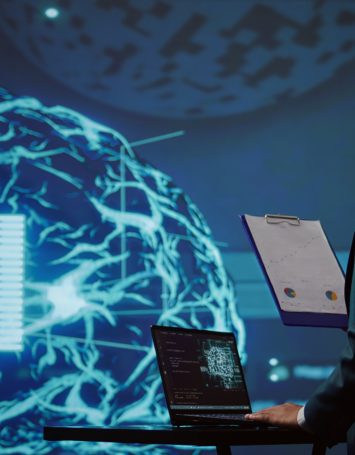Written by: Nitai Sylvetsky
AI Patents by the Numbers:
- According to a recent report by the National Science Foundation (NSF), approximately 190,000 AI-related patents were granted globally between 2000 and 2022.
- The United States has experienced a significant increase in AI-related patent applications over the past two decades. According to the U.S. Patent and Trademark Office (USPTO), the number of AI-based patent application publications grew nearly exponentially from 2000 to 2020.
- The USPTO’s Artificial Intelligence Patent Dataset (AIPD) identifies AI-related US patents and pre-grant publications published from 1976 through 2023, encompassing over 15.4 million U.S. patent documents.
With AI innovations increasingly generated and being used across industries, securing AI related patents has become more important. The USPTO’s July 2024 AI subject matter eligibility guidance aims to clarify patentability challenges for AI inventions, and to provide patent examiners with a clearer framework for examining AI-based inventions.
One hurdle for a patent application to mature into a patent is being considered patent eligible subject matter. The USPTO’s July 2024 AI subject matter eligibility guidance aims to clarify patentability challenges for AI inventions, and to provide patent examiners with a clearer framework for examining AI-based inventions. In short, the USPTO is taking a more critical stance on AI inventions that it sees as merely using generic algorithms or basic data processing without a clear technical improvement.
While the specific legal frameworks relevant to patent eligibility may be complex and even obscure (especially the law describing patent eligibility, based on 35 U.S.C. 101), some key principles for innovators interested in pursuing patent coverage for AI inventions include:
- Show a clear technological improvement – Highlight how your AI offers more than just standard algorithms. Does it introduce new functionalities, significantly cut computing time, or greatly improve accuracy? Focus on meaningful advancements rather than minor performance boosts.
- Explain how the AI works, not just what it does – Instead of stating your AI “identifies patterns,” describe the specific mechanisms behind it. Does it use a new neural network architecture, a unique processing method, or an improved training approach? Make it clear how your method differs from existing ones and how this difference is responsible for a technical improvement. Add detail, detail, detail.
- Tie AI to a real-world application with specific outputs – AI inventions are more likely to qualify for a patent if they are applied in concrete, unconventional ways (e.g., AI-driven medical diagnostics of a specific condition, a specific robotics task or challenge). Avoid broad statements—define specific outputs that enhance a particular technology or process to solve a real-world problem. Yes, specificity is key.
A common belief among patent practitioners is that AI patents face varying success rates across different art units within the USPTO. While not without basis, reliable data on these differences remains limited.
To provide innovators with an evidence-based approach, we recommend focusing on the principles above when describing your invention to maximize your chances of securing strong patent protection.
References/for further reading:
– https://www.nsf.gov/nsb/news/news_summ.jsp?cntn_id=309184&utm_source=chatgpt.com
– https://www.uspto.gov/sites/default/files/documents/OCE-DH-AI.pdf
– https://www.uspto.gov/ip-policy/economic-research/research-datasets/artificial-intelligence-patent-dataset?utm_source=chatgpt.com
– https://www.uspto.gov/about-us/news-updates/uspto-issues-ai-subject-matter-eligibility-guidance
– https://www.patentnext.com/2022/05/artificial-intelligence-ai-patent-filings-continue-explosive-growth-trend-at-the-uspto/?utm_source=chatgpt.com



